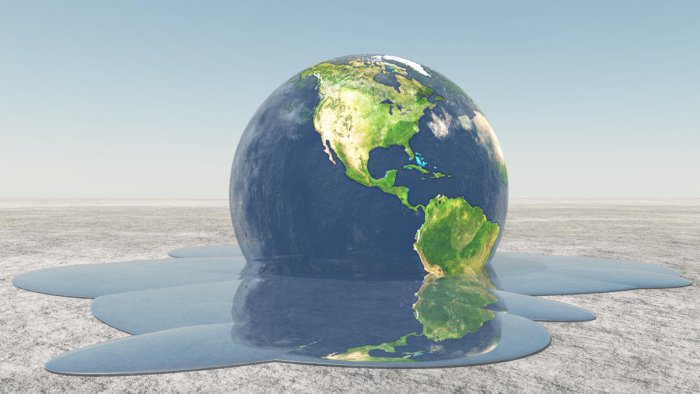New Delhi: India is at the cusp of bringing about some major transformations in the way the world thinks and perceives about its environmental related issues. It is actually at the cusp of change to unleash new
India is in a position to take leadership of cleaning the world, to teach a sustainable lifestyle to the world, guide them to have a minimalistic living, use local wisdom, employ glocal technology (global+local technology), lower the cost of energy expenditure in managing global warming, in preserving local wisdom and knowledge, weaving indigenous people with technology, and making the historical knowledge gained through millennia get identified, respected and implemented by the world.
The ways and means are many, one is through managing indigenous societies and their knowledge throughout the world. Indigenous people learn about other indigenous climate change-related experiences, while scientists gain opportunities to ground-truth (field check) climate models and scenarios. Being a 15,000-year-old civilization, India can play a pivotal role in not only ending the suffering of indigenous people but utilizing their knowledge and experience for the whole world. India can model universities based on such experience on the lines of Barefoot College in Tilonia. However, India will need to create a realistic model that is visible and invisible as per its choosing. This is where India can truly be a Vishwa Guru.
India can create two models to showcase and implement them for the world on its soft power platform. By creating a “nature centric development approach” that sets value and importance on the entire environment and all life in it, India can lead the whole world to make the shift. By fusing management and technology with minimal investment, India can showcase its carbon capture methods to the whole world. Secondly, we create self-reliant models of independent units with zero emissions that are environmentally sustainable in different agro-climatic regions.
We can set examples by expanding and reclaiming our wetlands to capture and sequester carbon deposits. Wetlands cover about 6 to 9% of the earth’s surface and sequester roughly 35% of the global terrestrial carbon.
Recent research shows that seaweed is the most effective natural way of absorbing carbon emissions from the atmosphere. India has a large Exclusive Economic Zone (EEZ), an area that extends 200 nautical miles from the shoreline. They can be used to remove huge amounts of carbon deposits and provide protein to its citizens from seaweed. The 7,500 odd km of coastline is an effective way to grow and nurture kelp. Kelp is a type of seaweed and its farming is considered to be a remedy for all the ills associated with global warming. Kelp can grow as much as 20 cm every day. It not only absorbs carbon dioxide but also de-acidifies the ocean water, making it less acidic. By drawing CO2 out of the waters they allow our oceans to absorb even more CO2 from the atmosphere.
With the largest basaltic exposure in the world, India can additionally use basalt weathering technology to absorb carbon deposits. Basalt weathering means mixing crushed basalt with soil, which slowly dissolves and reacts with carbon dioxide to form carbonates. This method would allow between 0.5 billion and 2 billion tonnes of CO2 to be separated from the atmosphere each year.
Our model of minimalistic living can be perfected by taking blocks from different agro-climatic regions to create unique models that are not only cost-effective but simple, sustainable, decentralised, resource congruent, and very developmental oriented, with lots of inbuilt models of innovations.
Going local has been our mantra lately. This life pattern is from ancient Indian wisdom. These concepts can be weaved with our minimalistic living lifestyle and our nature-centric development visions. The components of the model include energy management, water management, vegetarian diet management, housing using natural ingredients and zero energy agriculture all linked with satellites. Rural India works like a partially closed ecosystem in which energy obtained from plant photosynthetic is used to grow crops. This in turn provides essential energy input to grow more food and is an endless cycle. This can be cojoined with new farming technologies developed with countries like Israel, as well as agricultural technologies based on minimum energy.
The second solution is the modification and linkage of the Happiness model of Bhutan.
Both these models not only wean away countries from a GDP-based development model, but also provide alternative sustainable income on India’s soft power platform.
The third is the extension of PM Modi’s concept of the One Sun One World One Grid (OSOWOG) initiative organized along with the Chhatth festival (the only festival that worships the Sun). It aims to raise awareness about various ways to harness energy from the Sun. It aims to build a transnational grid that would allow countries to source solar power from regions where it is daytime to meet their green energy needs when their own installed solar capacity is not generating energy.
Fourth is, promote carbon credits. The carbon credit trade could help generate funds for green energy projects. Fifth is, organise the world on a platform that takes care of sustainability interests. India has a very good soft power reach, a very good potential for friendship quotient with many developing countries, an identity that is shaping up day by day and an influence that has the potential to transform the geopolitical relations of the world.
If India can reach its potential it will be a major paradigm shift in shaping international relations.
K. Siddhartha is a strategic thinker, advisor to governments, earth scientist, author, and mentor to over 1,600 civil servants.
India can be a Vishwa Guru in preventing climate change
इस शब्द का अर्थ जानिये
- Advertisement -

